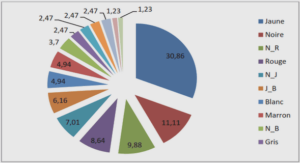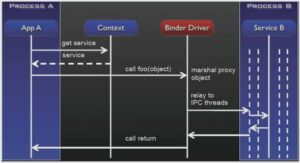Colonization and Decolonization in India
The Early Days of the East India Company
The English, as it is well known, first went to India as traders under the name of the East India Company also known as the East India Trading Company or the British East India Company, a British Royal Charted body of merchants who opened trade with India. The trading importance of India, a land rich in salt and valuable spices provoked the British to venture into Eastern Water, but the merchants were not slow to explore other channels of trade, and Dutch hostility in Indonesia turned their main interest to India. In 1600, Queen Elizabeth I gave the East India Company, by its first charter, a monopoly of the Eastern trade. The Charter granted to the Company the exclusive right for fifteen years of trading to and from the East Indies. That is to say the continents of Asia and Africa, from the Cape of Good Hope to the Straits of Magellan. With the exception of such places as were in the possession of any friendly Christian prince without his consent. It could hold courts and make laws for the good of government of the Company and its officers, and inflict reasonable punishment short of death in case of wrong doing. The Government was vested in a governor and twenty four committee men who were appointed yearly, but other officials were soon added such as the deputy-governor, secretary, and treasurer. The Governor and the Committee managed the practical details of the voyages, but they called together a general meeting of the members whenever it was necessary to do so. 10 English traders frequently engaged in hostilities with their Dutch and Portuguese counterparts in the Indian Ocean. The Company achieved a major victory over the Portuguese in the Indian Ocean at the Battle of Sevally in 1612. The company decided to explore the feasibility of gaining a territorial foothold in mainland India, with official sanction of both countries, and request that the Crown launch a diplomatic mission. In 1615 a British ambassador was accredited to the imperial court, his wise advice to abstain from hostilities and concentrated in trade was followed at least until the Company was sufficiently powerful to act otherwise with success. Sir Thomas Roe was instructed by James I to visit the Mogul Emperor Nuruddin Salim Jahangir (1605-1627 ) to arrange for a commercial treaty which would give the Company exclusive rights to reside and build factories in Surat and other areas. In return the Company offered to provide the Emperor with goods and rarities from the European market. This mission was highly successful as Jahangir sent a letter to James through Sir Thomas Roe. “Upon which assurance of your royal Love I have given my general command to all my governors and captains to give all the merchants of the English nation freedom answerable to their own desires; to sell, buy and to transport into the country at their pleasure. For confirmation of our love and friendship, I desire your Majesty to command your merchants to bring in their ships of all sorts of rarities and rich goods fit for my palace and that you be pleased to send me your royal letters by every opportunity, that I may rejoice in your health and prosperous affairs; that our friendship may be interchanged and internal”2 . In the early years this gave the British an advantage over their more bellicose European rivals. The Charter was renewed and made permanent by King James I, in 1609, and in 1612 came the founding of the joint- stock system. 2 Archbold, W. L., Outline of Indian Constitutional History (British period), New York, London: Steven and Son, 1926, p. 10 11 From this time on forwards the Company had a capital to draw upon, and fixed and definited resources. The first joint stock provided for four fairly prosperous voyages, and the second which was to finance three voyages from 1617 to 1620 was subscribed without difficulty. But there was not yet the necessary permanence; each joint stock was for an adventure longer than a single voyage but was still limited in scope. This state of affairs lasted till 1661 with certain developments and experiments. It was changed because it was found to be open to the same objections as that of the Regulated voyages, and the stockholders, as they had provided funds for a series of voyages, became correspondingly powerful. In 1657, Oliver Crowell renewed the Charter of 1609, and brought about minor changes in the holding of the Company. King Charles II granted a new Charter on April 3, 1661. By this joint-stock principle became permanent, and every member who had subscribed £500 to the Company’s funds received a vote in the general court. But the authority the Company possessed was much enlarged. It could appoint governors over its settlements, and the governor and council of a factory had power to administer the laws of England in all causes, whether civil or criminal, which affected the Company’s people there. The Company was still further recognized as a state within a state, as it could send out ships of war and soldiers, and wage war with non-Christian people and otherwise act in a sovereign capacity. Similar powers were given in 1669 when Bombay was handed over to the East India Company; and in 1683 we have a Charter giving wider rights of a military character, though carefully reserving the royal authority. In the last named Charter, too, power was granted to establish a court of judicature, to be held where the Company thought best, and to consist of one person learned in the law and two assistants; as a result of this a judge was sent out to Surat. These provisions substantially reappeared in a Charter of 1686 and in consequence a court was established at Madras
The Acquisition of Territory
The English were not the first Europeans to come in India in the Mogul Empire, where Akbar was reigning at the time. That sovereign had gradually united all the North and the Centre under his rule, and though his power over the South was limited, from the point of view of the Company, all India was one. The English, however, who first came to India in an organized fashion wished to establish themselves in the Spice Islands, where they found formidable and indeed successful rivals in the Dutch. In the course of his first voyage Captain Lancaster obtained a Charter of privileges from the King of Achin in 1602 which, in addition to trading rights, granted certain interesting immunities. The following passages may be cited: “ Item. If any English merchant, factor or servant shall offend the Agent or Chief Governor of the Factory it shall be lawful for the said Governor to do justice upon the said party or to send him home into England at his pleasure, and further we grant unto the said Governor power and authority to end any controversy that shall arise between them and to do justice according to their own laws and customs6 .” “ Item. We do grant to the said merchants and to their successors that if any of them or of their servants shall be wounded or be slain in any part 6 Archbold, W. L., op. cit. p. 25 18 or place of our dominion then information thereof being given we our justices or other officers will execute due correction and punishment without delay according to the cause of the offence so that it shall be an example to all others not to offend in the like. And if it shall happen the factors, servants, or ministers of the said merchants to trespass or offend whereby they or any of them shall incur the danger of death or punishment that then the goods wares or merchandises of their signiors shall not be forfeited, confiscated, seized upon nor spoiled by us our heirs or successors, or by any of our officers, ministers or subjects, but shall remain frank and free as discharged of all punishment or loss7 .” “Item. That we of our goodness have granted to the said English merchants, their successors, servants and deputies that do or shall remain in any part of our kingdom of Somatra whether it be in Dachem or in any other part of our dominions freely to keep their own laws and in anywise none of ours to force them to our laws or faith against their wills8 .” On the mainland of India they first made a proper settlement at Surat in 1608, but they had bitter foes there in the Portuguese who had the ear of the Great Mogul, and it was some time before they were certain that they could stay. It is true that they obtained some trading rights from the local authorities, and that these were confirmed by the Great mogul; but Sir Thomas Roe, who went as ambassador in 1615, was only moderately successful. He secured that they could trade, hire a house, and have self-government for their own people, but the privileges were not all that he wanted. The number of Englishmen was very small, in 1612 there seem to have been but ten at Surat, and in 1615 there were only seven factors and five attendants.
British Rule in India
British rule, though about three centuries old began late in the history of India’s exploitation. By the time Captain William Hawkins first anchored off Surat in 1608, sent there by London’s East India Company, Portuguese traders had been in India for more than 100 years, and Dutch agents controlled the coast. They were all after a rich prize, for enormous profits could be made by trading cheap European goods and metals for exotic Indian spices, drugs, silk, and calico. Vanquishing their rivals, the British moved inland and took control of the subcontinent. The Company’s original purpose was to trade with India, and the East India Company, during the first century of this association, showed no enthusiasm to assume political responsibility in India, locally at first, to ensure the security of its trade, it was obliged to exercise function after function more appropriate to a government than a trading corporation. The British victory at the Battle of Plassey marks a landmark in the beginning of the British rule. Robert Clive’s victory was consolidated in 1764 at the Battle of Buxar where the emperor Sham Alam II was defeated. As a result, Sham Alam was coerced to appoint the Company to be diwan (collector of revenue) for the areas of Bengal, Bihar, and Orissa, on payment of specified sums to the Emperor and the Nawab. It was recognized that this carried with it the power to make provision for the administration of civil justice, but, in theory, the Company would be fettered by the laws of the Empire, just as it had previously been by the laws of England. There were practical difficulties in keeping within both restrictions, which were frequently overstepped11 . The first problem facing the Company in its new role was to create an administration machine. The collection of revenue was first entrusted to Indian officials under the Naib Diwan, a minister of the Nawab, but, being dissastisfied 11 Gledhill, A., The British Commonwealth: The development of its law and constitution: Pakistan volume 8, London: Steven and Son, 1957, p.16 25 with the collection received under this arrangement, in 1771 the directors decided that the Company should perform this function directly. Warren Hasting was appointed Governor in Bengal in 1772. Holding that the responsibility for revenue collections implied direct responsibility for administration, he posted Company’s servants to districts as collectors. In their first experience of this duty, their assessment often proved excessive, and some of their settlements were made with speculators, but at least they were able to investigate and report on local conditions to the Governor’s council. In 1773, however, from motives of economy, the British Parliament enacted a Series of laws among which the Regulation Acts of 1773 which stood first to curb the Company’s traders unrestrained commercial activities and to bring some orders in territories under the Company control. The directors ordered the withdrawal of the collectors. They were replaced by Indian officials under the control of six “provincial” councils of revenue, which, in turn, were under the control of a committee (later Board) of Revenue in Calcutta. Limiting the Company charter to a period of twenty years, subject to review upon renewal, the 1773 act gave the British government supervisory rights over Bengal, Bombay and Madras presidencies. Bengal was given preeminence over the rest because it was the seat of British power in India (at Calcutta), whose governor was elevated to the new position of governor general. The councils and the Committee found their tasks hampered by lack of reliable information, and in 1781 the collectors returned to their Districts 12 . This finally determined that the district was the principal unit of British Indian administration, but the precise scope of the collector’s powers was still a matter for experiment. After the annexation of the Punjab in 1849, the heads of districts in that province were called the deputy-commissioners, and almost all powers of government were concentrated in them. This became the normal practice when introducing the British Indian system of government into a newly 12 Gledhill, A., op. cit. p. 17 26 acquired province. As time went on, the discretionary power of the deputycommissioner was curtailed by legislation, but, whether he were styled collector or deputy-commissioner, he was the agent and representative, the eyes and ears of government within his district. Provide he kept within the law, and acted reasonably and in good faith in the discharge of these responsibilities, his discretion would not be questioned and he would be supported from above. This was an adaptation of the Mogul system, with the differences that the collector or deputy-commissioner was remunerated by a salary adequate to eliminate conflict between his private advantage and the public interest. And that for latter part of the British period he belonged to a service which had its own methods of ensuring that its members maintained high standards of public service. He might brave the wrath of government, but not the contempt of his colleagues.
Introduction |






